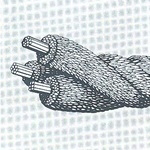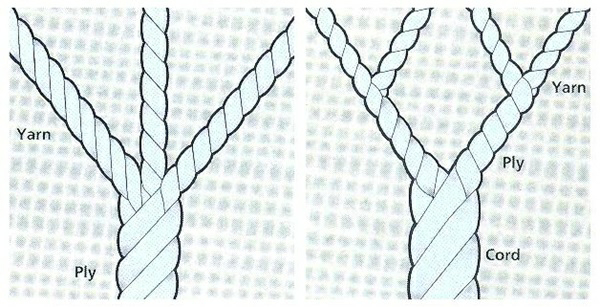Thursday, 29 February 2024
Carton Consumption & Costing
Tuesday, 20 February 2024
What is SAM and formula
Monday, 5 February 2024
Selecting Your Sewing Threads
Thursday, 1 February 2024
Produce a garment fabric consumption
What is Engineering? What is IE? What is SMV? What is Efficiency
Factory KPI | KPIs for Garment Manufacturers
KPIs for Garment Manufacturers
Key Performance Indicators (KPIs) are measured to assess where the factory currently stands and to find key focus areas where management needs to look into. Top 9 KPIs have been listed and explained below that are measured by garment manufacturers (export houses) in the apparel industry. Analysis of these KPIs is carried out monthly.
1. Factory Efficiency%
Factory efficiency indicates how efficiently sewing lines is run in a factory. This indicator is important because capacity planning of the factory and projected garment making cost is done based on factory efficiency. Factory efficiency includes all lines minutes produced and total hours attended by direct labor in sewing floor. Target factory efficiency varies based on the order quantity. For the detailed calculation of efficiency refer to ‘how to calculate efficiency of a production line or batch?” For factory efficiency – calculate total minutes produced by all lines and total minutes attended by all lines. Factory efficiency% = (Total minutes produced X 100)/Total minutes attended.
2. Man to Machine Ratio:
When it is factory’s Man to Machine ratio (MMR), every employee of the factory is considered under manpower. So, Man: Machine= Total manpower: Total sewing machines available in the factory (machines those are in use). For example, if a factory has 500 sewing machines and total manpower of the factory is 1100 then man to machine ratio =1100:500 OR 2.2. This ratio varies product to product and on organization structure.
3. Cut to ship ratio:
This is a ratio of total cut quantity and total shipped quantity of an order. This indicator measures order wise and monthly shipped orders. To keep buffer (for damaged, defective garments) factory cuts extra pieces than order quantity. For example: factory received an order of 20000 pieces, cut quantity 20200 pieces (1% extra cutting) and total shipped quantity 20000 pieces. Cut: Ship = 20200:20000 = 1.01. This indicator is measured to control surplus quantity after shipment, reduction in extra cutting and damaged garment. Target Cut to ship ratio is 1.
4. Order to ship ratio:
Buyer expects to receive the full quantity from supplier that has been ordered. This is the most important factor that buyers use for vendor evaluation. This indicator is calculated as = Total order quality/ Total shipped quantity. Target of Order to Ship ratio is always 1. It is good if the factory can ship higher than order quantity (only if buyer accepts extra quantity).
5. On time Delivery:
How many shipments did not meet target shipment date is analyzed at the end of each month? Target on time delivery of each style is to meet shipment delivery date. If not meet reasons of not meeting delivery date are analyzed. It is calculated as = Total orders shipped on time/Total orders shipped on the month. For example, if factory shipped 18 styles on time out of total 20 styles shipped in month, then On time delivery of that month is =18/20*100% = 90%
6. Average style changeover time:
Time gap between previous style over (last piece out from the line) and first piece output of the current style is known as style change over time. Shorter changeover time is considered as better performance level. It varies from style to style and production systems. Time of Change over time of each style is recorded and average changeover time of the factory is measured.
7. Right First time quality:
This indicator is represented in percentages. Total audits passed in first time out of total audit conducted by auditors. First time right quality is measured in various stages of garment processing and analysis is done audit wise. Higher values (percentage) of right first-time quality is considered as better performance of the factory.
8. Quality to Production:
The quality level of each department is measured in DHU and Percentage defective unit. The higher the value of DHU higher alteration time and higher cost incurred in quality.
9. Down time percentage:
Down time is one of the topmost reasons for less factory efficiency. Factory analyses major down times to control and improve machine and operator utilization. The top 5 reasons for down time (also known as non-productive time, Off-standard time) are line setting, operation sitting idle, no feeding, machine breakdown and no planning for line.
Garment manufacturing business, more specifically garment export business is a profitable business if factory performance is measured and management work to improve performance level step by step. Each of the above KPI plays a role on production cost, factory’s reputation and profit margin
Key Performance Indicators (KPIs) for Quality Management for Clothing Factories:
In the apparel industry, professionals always talk about product quality, defects, and quality systems. To the buyers – the end product what they are receiving from the factory, quality should be as per the requirement. No more, no less. Earlier buyers don’t bother how a factory makes quality? How many extra pieces they have processed to achieve all good pieces to handover the buyer?
On the other side factories don’t think how much money they are losing through repair work and garment rejection. It has been assessed unlike last decade now-a-days manufacturer become quality conscious and looking for solutions of quality related problems and many of them demand that they have good quality system in place and they ship quality garment to the buyer. Even during vendor selection buyers look for factories quality management systems, quality performance history. But the question is do factories measure the quality performance?
It not just what you feel about your product quality is, there must be certain performance measuring criteria.
We suggest factories track their performance on the following KPIs and on that KPI they improve their quality performance on a continuous basis.
• Customer complaint: When buyers receive something wrong with the contract with suppliers in terms of product quality they claim damages. It is a huge amount of money to pay back to the buyer. Even factories may lose business relationship with those buyers due to poor product quality. So, customer complaint is considered as the most important KPI.
• AQL levels: It means when garments are inspected what AQL level is being followed as pass or fail criteria. Though it may vary product to product, but it gives clear idea about factory’s quality performance. The lower the AQL you follow, the better the quality performance.
• Percentage Defective level: This term is also known as Defect %. It is a measure of total defective garments found and total garments inspected in percentage. It can be calculated batch-wise or based on complete order. Generally factory measure Defect percentage on daily and hourly basis of batch. The less the defect% better is the quality performance.
• Defects per Hundred Units (DHU): Factories measure Defect% but don’t track total number of defects found in inspected pieces. Tracking of DHU is important because your rework time and work force required for repairing defect directly linked with DHU number. The less the DHU better is the quality performance.
• Rework Cost: Each rework is a cost to the company. The rework costs vary according to the process and types of reworks. It consumes extra time and increases factory overheads. Process-wise and product-wise rework cost can be tracked to measure it. Lowering the Rework cost better is quality performance.
• Right First Time (RFT): For garment manufacturer RFT quality is an ideal situation. It means whatever activities you do to make the garment; quality of the garment should be correct at the first time. Data can be captured for RFT at each process, and it is expressed in percentages.
























